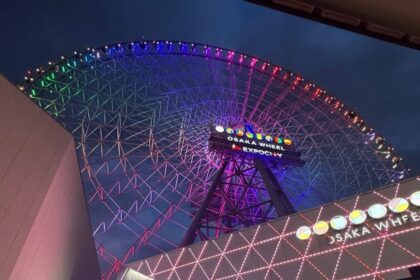Samsung’s Micro RGB TV: Redefining Color Accuracy and Home Entertainment
Samsung has officially launched the world’s first Micro RGB TV, a technological leap that promises to set a new benchmark for color accuracy, contrast, and immersive viewing in the ultra-premium television market. Debuting with a massive 115-inch model in South Korea and priced at approximately $32,000, this new display technology is poised for a global rollout, including the United States and other major markets. The Micro RGB TV is not just another large-screen television—it represents a significant evolution in how LCD TVs deliver color and brightness, challenging the dominance of OLED and traditional Mini LED displays.
- Samsung’s Micro RGB TV: Redefining Color Accuracy and Home Entertainment
- What Is Micro RGB Technology and How Does It Work?
- Key Features and Specifications of the 115-Inch Micro RGB TV
- How Does Micro RGB Compare to the Competition?
- AI and Smart Features: The Next Generation of TV Intelligence
- Industry Impact and the Future of Large-Screen TVs
- In Summary
What Is Micro RGB Technology and How Does It Work?
At the heart of Samsung’s innovation is its proprietary Micro RGB backlighting system. Unlike conventional LED TVs that use white or blue LEDs behind the LCD panel, Micro RGB employs an ultra-fine array of individually controlled red, green, and blue micro LEDs, each less than 100 micrometers in size. This micro-scale arrangement allows for unprecedented precision in backlight control, resulting in richer colors, deeper contrast, and more lifelike images.
To put it simply, while traditional Mini LED TVs use thousands of small LEDs (typically blue or white) to illuminate the screen, Micro RGB divides this further by using separate red, green, and blue LEDs. This enables the TV to more accurately reproduce the full spectrum of colors, as each color channel can be controlled independently. The result is a display that achieves 100% coverage of the BT.2020 color space—a global standard for color accuracy in both standard and high dynamic range (HDR) content.
Samsung’s Micro RGB TV is powered by the Micro RGB AI Engine, which leverages artificial intelligence to analyze every frame in real time. This engine optimizes both picture and sound, enhancing dull tones and ensuring that colors appear vivid and true to life. The AI Color Booster Pro feature further refines color output, while the Micro RGB Precision Color system has earned certification from the German institute VDE, underscoring its industry-leading accuracy.
How Does Micro RGB Differ from MicroLED and Mini LED?
It’s important to clarify that Samsung’s Micro RGB TV is not a true MicroLED TV. MicroLED displays are self-emissive, meaning each pixel is its own light source, capable of turning on and off independently. This allows for perfect blacks and infinite contrast, but manufacturing large MicroLED panels is extremely expensive and complex. For example, Samsung’s 110-inch MicroLED TV retails for around $150,000—nearly five times the price of the new 115-inch Micro RGB model.
Micro RGB, by contrast, is an advanced form of LCD TV. It still uses an LCD panel to control the image, but the backlight is made up of micro-scale RGB LEDs instead of the more common blue or white LEDs. This approach offers many of the color and brightness benefits of MicroLED at a fraction of the cost, making ultra-large, high-performance TVs more accessible to consumers.
Key Features and Specifications of the 115-Inch Micro RGB TV
The 115-inch Micro RGB TV is packed with features designed to appeal to home theater enthusiasts, gamers, and anyone seeking the ultimate in television technology. Here are some of the standout specifications:
- Micro RGB Backlight: Individually controlled red, green, and blue micro LEDs, each less than 100 micrometers in size.
- Color Accuracy: 100% coverage of the BT.2020 color space, certified by VDE for precision color.
- AI-Powered Processing: Micro RGB AI Engine for real-time picture and sound optimization, AI Color Booster Pro, and Vision AI for contextual enhancements.
- Display: 115-inch 4K VA LCD panel with a variable refresh rate up to 144Hz, ideal for gaming and fast-paced content.
- HDR Support: HDR10, HDR10+, HLG, and HDR10+ Gaming (no Dolby Vision support).
- Audio: 70W 4.2.2-channel speaker system with Dolby Atmos, Object Tracking Sound+, and Q-Symphony for immersive audio.
- Design: Super slim metal chassis with Glare Free matte screen to minimize reflections.
- Smart Features: Tizen OS with seven years of free major updates, Bixby voice assistant powered by generative AI, Google Assistant, Alexa, Samsung Health, SmartThings Hub, Art Mode, MultiView, and more.
- Gaming: 144Hz variable refresh rate, AMD FreeSync Premium Pro, AI Auto Game Mode, ALLM, Dynamic Black Equalizer, Mini Map Zoom, Samsung Gaming Hub, and Philips Hue light syncing.
- Connectivity: Four HDMI 2.0 ports, two USB-A ports, Wi-Fi 5, Bluetooth 5.3, AirPlay 2, ethernet, and optical audio out.
- Security: Samsung Knox for data protection.
- Remote: SolarCell Remote with USB Type-C charging.
Samsung has also committed to a seven-year free Tizen OS upgrade program, ensuring that the TV remains up-to-date with the latest features and security enhancements.
How Does Micro RGB Compare to the Competition?
Samsung’s Micro RGB TV enters a competitive landscape where other manufacturers are racing to develop similar RGB LED backlight technologies. Hisense, for example, has launched the 116UX TriChroma RGB Mini-LED TV, a 116-inch 4K model priced at $30,000 in the US. Like Samsung’s offering, the Hisense TV uses individually controlled RGB LEDs for backlighting, boasts a peak brightness of up to 8,000 nits, and covers up to 95% of the BT.2020 color space. It also features a 165Hz refresh rate, Dolby Vision support, and a robust 110W 6.2.2-channel speaker system.
Other brands such as Sony and TCL are preparing to launch their own RGB LED LCD TVs, with Sony’s version expected in 2026. Each company uses slightly different branding—Samsung calls it “Micro RGB,” Hisense uses “TriChroma” or “RGB MiniLED,” TCL refers to “RGB miniLED,” and Sony simply “RGB LED.” Despite the naming differences, the core technology is similar: using separate red, green, and blue LEDs for the backlight to achieve superior color reproduction and brightness.
While these TVs are unlikely to become mainstream due to their size and price, they represent the cutting edge of LCD technology and offer a genuine alternative to projectors for home theater enthusiasts seeking screens larger than the biggest OLEDs (which currently top out at 97 inches).
Advantages and Limitations of Micro RGB TVs
Micro RGB TVs offer several advantages over traditional Mini LED and OLED displays:
- Superior Color Accuracy: Achieving 100% BT.2020 coverage means these TVs can display a wider and more accurate range of colors than most competitors.
- Higher Brightness: The use of micro-scale LEDs enables higher peak brightness, making these TVs ideal for well-lit rooms and HDR content.
- Reduced Blooming: More precise local dimming reduces the halo effect often seen on LCD TVs.
- Lower Cost Than MicroLED: While still expensive, Micro RGB TVs are significantly more affordable than true MicroLED displays of similar size.
However, there are some limitations to consider:
- LCD Inherent Issues: Because Micro RGB TVs still rely on an LCD panel, they can suffer from issues like haloing, lighting uniformity problems, and less-than-perfect black levels compared to OLED or MicroLED.
- Size and Price: At 115 inches and $32,000, these TVs are out of reach for most consumers and are best suited for luxury home theaters or commercial installations.
- No Dolby Vision: Samsung’s Micro RGB TV does not support Dolby Vision, a popular HDR format, though it does offer HDR10+ and other standards.
AI and Smart Features: The Next Generation of TV Intelligence
Beyond hardware, Samsung’s Micro RGB TV is a showcase for the company’s latest advancements in artificial intelligence and smart home integration. The Micro RGB AI Engine not only optimizes picture quality but also enhances audio, adapts to ambient lighting conditions, and provides contextual information about on-screen content through Vision AI. The TV’s Bixby voice assistant is now powered by generative AI, making interactions more conversational and personalized.
Other smart features include far-field microphones for voice control, a built-in light sensor for automatic brightness adjustment, and compatibility with Samsung Health, SmartThings, and a wide range of streaming and gaming services. The TV also supports MultiView for simultaneous content display, Art Mode for displaying artwork when not in use, and advanced gaming features such as AI Auto Game Mode and Super Ultra Wide Game View.
Industry Impact and the Future of Large-Screen TVs
The launch of Samsung’s Micro RGB TV marks a pivotal moment in the evolution of large-screen displays. By achieving full BT.2020 color coverage and leveraging AI for real-time optimization, Samsung is pushing the boundaries of what LCD technology can deliver. This move is likely to accelerate the adoption of RGB LED backlighting across the industry, with competitors like Hisense, Sony, and TCL already following suit.
While the initial models are prohibitively expensive for most consumers, the underlying technology is expected to become more affordable and available in smaller sizes over time. As manufacturing processes improve and economies of scale kick in, Micro RGB and similar technologies could eventually bring ultra-accurate color and high brightness to mainstream TVs.
Expert and Industry Reactions
Industry analysts and display experts have praised Samsung’s innovation, noting that Micro RGB TVs offer a compelling alternative to both OLED and traditional Mini LED displays. According to FlatpanelsHD, the use of separate RGB LEDs results in a much larger color gamut than current Mini LED LCD TVs, with Samsung’s implementation standing out for its sub-100-micrometer LED size and precision control.
At CES 2025, where the technology was first previewed, reviewers were impressed by the vibrant colors, detail, and overall image quality. However, some noted that, as with all LCD-based technologies, perfect black levels remain elusive compared to OLED and MicroLED.
As one industry expert put it, “These TVs are unlikely to sell in large numbers due to their price, but they represent the next generation of LCD TVs. While they do not yet match the best OLED TVs in all areas, they have advantages in brightness and size, surpassing the largest OLED TVs, which are 97 inches and cost about $20,000.”
In Summary
- Samsung has launched the world’s first Micro RGB TV, starting with a 115-inch model priced at $32,000 in South Korea and soon to be available globally.
- Micro RGB technology uses individually controlled red, green, and blue micro LEDs (under 100 micrometers) for the backlight, enabling 100% BT.2020 color coverage and superior brightness.
- The TV is powered by advanced AI features for real-time picture and sound optimization, and includes a host of smart and gaming features.
- Competitors like Hisense, Sony, and TCL are developing similar RGB LED LCD TVs, signaling a new trend in ultra-premium displays.
- While still expensive and limited in size, Micro RGB TVs represent a major step forward in color accuracy, brightness, and large-screen home entertainment.












